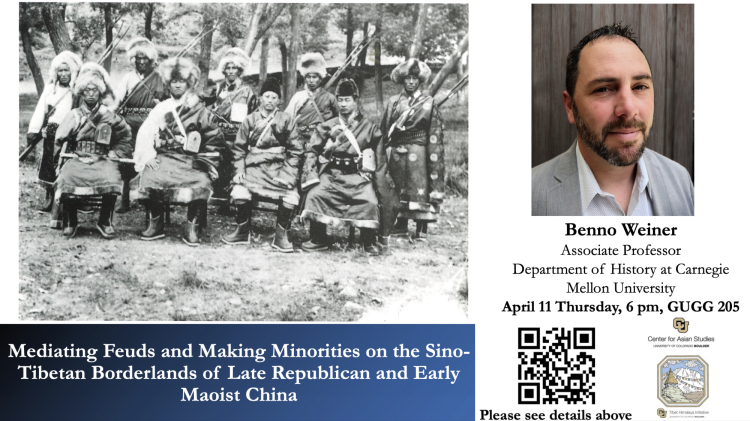
Mediating Feuds and Making Minorities on the Sino-Tibetan Borderlands of Late Republican and Early Maoist China.
April 11 Thursday, 6pm, GUGG 205
In early 1941, the Kuomintang dispatched a well-known scholar-official, Gao Yihan, to investigate a “grassland dispute” between two Tibetan chiefdoms on the Qinghai-Gansu border. As Gao quickly discovered, the Gyelwo-Gengya feud was part of a much larger contest put into motion by the collapse of Manchu Qing power and competition between a host of regional actors to shape the post-imperial order. It also pitted statist desires to create and enforce bounded political-legal jurisdiction against the mobile nature of pastoral society and the norms of monastic/religious authority that often stretched across state boundaries and into sometimes distant, non-contiguous communities. A decade later, state media touted the Chinese Communist Party’s purported success in finally resolving the Gyelwo-Gengya feud to be one of its foremost achievements in “nationality work” during the early period of the PRC. This paper examines efforts by the late-Republican and early-PRC states to mediate grassland disputes as key components in state-making processes designed to territorially and epistemologically discipline the Sino-Tibetan frontier according to the demands of progressively more powerful and interventionist state formations. It also suggests that the state’s inability to eliminate these types of disputes is an avenue through which to measure the incomplete nature of these transformations.
Benno Weiner is Associate Professor in the Department of History at Carnegie Mellon University. He is author of the Chinese Revolution on the Tibetan Frontier and co-editor of Contested Memories: Tibetan History under Mao Retold. His most recent article, “‘This Absolutely is not a Hui Rebellion!’ The Ethnopolitics of Great Han Chauvinism in Early Maoist China,” was published in the October issue of the journal Twentieth Century China.
Co-Sponsored by the Center for Asian Studies and the Tibet Himalaya Initiative.
